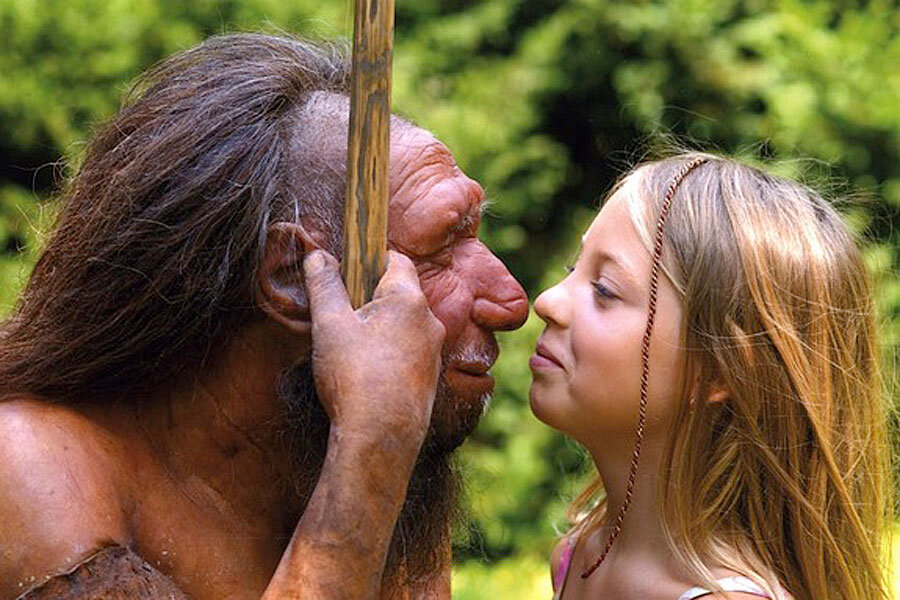Neanderthal groups were small, isolated, suggests DNA analysis
Loading...
Neanderthals were remarkably less genetically diverse than modern humans, with Neanderthal populations typically smaller and more isolated, researchers say.
Although Neanderthals underwent more genetic changes involving their skeletons, they had fewer such changes in behavior and pigmentation, scientists added.
Modern humans are the only humans alive today, but Earth was once home to a variety of other human lineages. The Neanderthals were once the closest relatives of modern humans, with the common ancestors of modern humans and Neanderthals divergingbetween 550,000 and 765,000 years ago. Neanderthals and modern humans later interbred — nowadays, about 1.5 to 2.1 percent of DNA of people outside Africa is Neanderthal in origin. [See Photos of Our Closest Human Ancestor]
Researchers first sequenced the Neanderthal genome in 2010. "One of the next goals was obviously to begin to explore the variation among Neanderthals," said study author Svante Pääbo, an evolutionary geneticist at the Max Planck Institute for Evolutionary Anthropology in Leipzig, Germany.
Pääbo and his colleagues analyzed three Neanderthal genomes. One came from a 49,000-year-old specimen from Spain; another from a 44,000-year-old specimen from Croatia; and one from a Siberian specimen at least 50,000 years old.
"For the first time we begin to get a detailed picture of genetic variation among Neanderthals," Pääbo told Live Science.
The scientists found that Neanderthals "had even less variation than present-day humans, who are already known to have less than chimpanzees and most other apes," Pääbo said. "The amount of genetic diversity in the Neanderthals was about a quarter of that in Africans today, and about a third of that in Europeans or Asians."
To pinpoint why Neanderthals might have been less genetically diverse, the researchers focused on 17,367 genes that encoded instructions for generating proteins. They concentrated on mutations that changed what amino acids went into those proteins. Such mutations have a good chance of altering the structure or function of those proteins.
Although mutations that change the amino acid makeup of proteins can have benefits, more often than not, they have detrimental effects. One should expectnatural selection to weed out these mutations over time, as anyone bearing them is probably less fit and thus not as likely to survive to reproduce. However, such mutations can accumulate in small, isolated populations, since those groups have fewer normal versions of those genes in their gene pools to replace any mutant genes.
The investigators found Neanderthals carried more copies of mutations that would alter the amino acid makeup of proteins than modern humans possess. This suggests that Neanderthal populations across Eurasia were likely small and isolated.
"Neanderthals seem to have been few in numbers either over a long time or for some periods," Pääbo said. "There is also an indication that they have been subdivided in populations that had little contact with each other."
The fact that Neanderthals carried more copies of potentially detrimental mutations did not necessarily contribute to their extinction, said lead study author Sergi Castellano, at the Max Planck Institute for Evolutionary Anthropology. "No claim should be made that this is related to their extinction," Castellano told Live Science.
The researchers also found skeleton genes changed more than expected within the Neanderthal lineage.
"For example, genes that affect the curvature of the spine have changed in Neanderthals," Pääbo said. "This fits with how their skeletons have changed quite drastically during their evolution."
On the other hand, genes involved with pigmentation and behavior changed more in the modern human lineage.
"We do not yet know if and how these very mutations affect behavior," Pääbo said. "Clearly, it will be interesting to study more Neanderthals so that one can begin to reconstruct their history in more detail."
The scientists detailed their findings online today (April 21) in the journal Proceedings of the National Academy of Sciences.
Follow us @livescience, Facebook & Google+. Original article on Live Science.
- In Photos: Neanderthal Burials Uncovered
- Unraveling the Human Genome: 6 Molecular Milestones
- Wipe Out: History's Most Mysterious Extinctions
Copyright 2014 LiveScience, a TechMediaNetwork company. All rights reserved. This material may not be published, broadcast, rewritten or redistributed.







